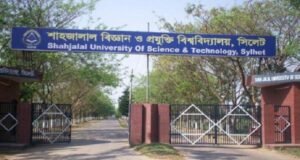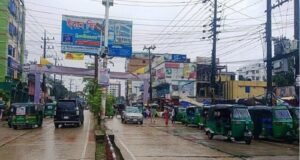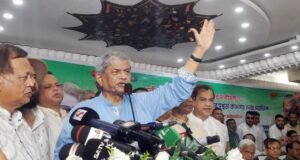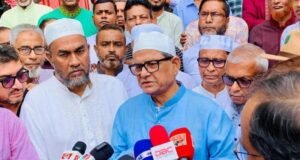 There is no publicly-funded primary school in 485 villages under 11 upazilas, which is particularly depriving students of remote haor areas of quality education. The number of such villages in Sunamganj Sadar upazila is 157.
There is no publicly-funded primary school in 485 villages under 11 upazilas, which is particularly depriving students of remote haor areas of quality education. The number of such villages in Sunamganj Sadar upazila is 157.
Each of the villages having no primary school is home to 1,000-2,000 people, according to district primary education office sources.
Schools in urban areas in Sunamganj have admitted students more than two to three times their capacities in the face of an acute shortage of government primary schools in villages.
A total of 35 government primary schools have been established in the district as part of a project to build 1,500 schools in areas across the country where there is no school.
Of the 35, 19 are in operation and 13 have not yet been fully constructed while tenders for the remaining three have not been invited.
Namita Sarker, head teacher of Kalibari Government Primary School which is located at the heart of the town, said a total of 810 students from pre-primary education to the fifth grade attend classes in two shifts.
“We only have two school buildings and nine classrooms to teach all these students. Many parents from the locality and nearby areas want their children to be enrolled in the school as we have achieved a good academic achievement in terms of results,” she said.
“But we have only one toilet for all 810 students. There is no separate toilet for the teachers either. The electrical wiring in the classrooms has turned very old and there can be accidents any time.
“The floors of the school buildings erected in 2010 have become unusable. Waterlogging is commonplace in front of the school during the monsoon as there is no drainage system,” said the head teacher.
Assistant teacher Minakshi Das said students during the full summer fall sick because of poor ventilation in the classrooms.
Another assistant teacher Nazmin Mazumder said the number of students is evidently disproportionate to the size of the classrooms.
“For this, teachers are forced to speak aloud but still the students sitting at the back struggle to listen to lectures. We also have a shortage of school benches and other furniture,” she added.
Education Officer of Sunamganj Sadar upazila, Md Solaiman Mia, admitted that schools are scanty compared to the number of students.
“The government primary schools are forced to accept many more students than their capacities, which also translates into a huge pressure on teachers. This is not an environment conducive to teaching and learning both on the part of students and teachers,” he said.
Education Officer of Dharmapasha upazila, Rokeya Akhter Khatun, said one way to reduce the pressure on existing schools is to build more schools in the upazilas.
Md Bazlur Rahman, education officer of Doarabazar upazila, said the inadequate number of teachers in many schools is another big problem that needs to be addressed. “Students living in remote and distant parts of the district are the worst sufferers.”
Chairman of Sunamganj Sadar upazila, Dewan Joynul Jakerin, said the high land prices in the municipal area is one of the biggest impediments to establishing new schools.
“The problem can be resolved if the government acquires land,” he said.
Pir Fazlur Rahman, lawmaker of Sunamganj 4, said it is sad that Sunamganj lags far behind the whole country when it comes to access to education.
“During the fifth session of the tenth parliament, I urged the finance minister to take plans for resolving the existing problems in the haor areas. I also urged to take development plans,” he said.
Md Hazrat Ali, Sunamganj district primary education officer, said the higher authorities had been informed of the villages devoid of primary schools.
“Now it is up to the government to decide how many schools they will establish in the district,” he added
 Weekly Bangla Mirror | Bangla Mirror, Bangladeshi news in UK, bangla mirror news
Weekly Bangla Mirror | Bangla Mirror, Bangladeshi news in UK, bangla mirror news







